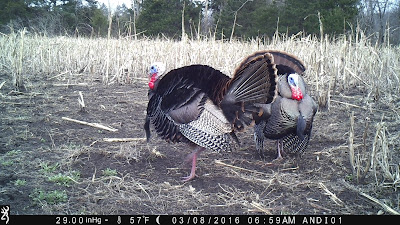Huntress View Team Member
After several
years of applying for a rifle elk tag in Idaho, I finally drew one in 2016. I
almost jumped out of my chair with excitement when I saw “Congratulations” on
the screen but almost immediately started thinking about all of the prep work I
needed to do to get ready. I live in Kentucky. And hunting in Kentucky is
nothing like hunting in Idaho. The climate, the terrain, the potential shooting
distance…lots of things to consider.
Here are a few
tips on how to prepare for your big hunt:
Get fit!
- If you have limited time, a successful hunt often depends on the ability to cover a lot of ground in a short amount of time. That makes it even more important to be in good physical condition.
- If your everyday life doesn’t include much physical activity, start walking, jogging, climbing stairs or join a gym.
- If you have a regular cardio and strength training routine in the gym, change it up by getting outdoors and trying trail running. This works different muscle groups and helps get you used to the changes in terrain that you’ll encounter on your hunt.
- Instead of taking the 4-wheeler to check trail cameras, take a hike!
- Wear your hunting pack while hiking, but add some extra weight that replicates what you might be carrying during the hunt. Hike to your feeders with a backpack full of corn.
- If you’ll be hunting with friends or family, try to get them involved in the exercise.
Practice, practice, practice to ensure a
great shot
- Whether you’re hunting with a bow or a gun, the more you practice, the better you’ll shoot when it counts.
- Shoot wearing the clothes you’ll be hunting in.
- Practice while standing and sitting in different positions.
- Shoot at different distances. If you might be taking a 200-yard shot, practice at 200 yards.
- If you’ll be hunting from a ground blind or tree stand, make sure to practice from them so you’ll be aware of blind spots, what position you might need to be in, and any possible visual obstructions. And remember…ALWAYS wear your harness in the tree stand!
- If hunting with a gun, practice using shooting sticks or other stabilizers.
- Try to guess distances while walking, then pace it off or check with a range finder to see how well you guessed. You might not always have the chance to range find in the moment.
Make sure you have appropriate clothing
and shoes
If you’re
hunting in a different state, the weather is likely going to be different than
what you’re used to that time of year. Identify what type of clothing and/or
accessories you will need for your hunt.
- Check the average temperatures for when and where you’re hunting to identify what you might need.
- Waterproof rain gear is always good to have on hand.
- Be sure to have clothes you can layer. Cold mornings can turn into hot afternoons. You’ll need to adjust you’re clothing throughout the day so you’re warm enough in the morning, but not overheating in the afternoon.
- If snow is expected, a pair of leg gaiters will help keep feet and lower legs dry.
- Look for camo patterns that match the terrain you’ll be hunting.
- If you decide new boots are needed, make sure to purchase them early enough to break them in. The last thing you want is to be in the middle of nowhere with blisters and aching feet!
- Make sure you have the correct hunter orange clothing if required by the state you’re hunting.
Check your hunting equipment to make
sure it’s in working order
Well before
your hunt, make a list of all equipment you’ll need. Take inventory of what you
have, and determine what you need to get. Check all equipment for damage or
wear that might cause problems during a hunt.
- Make sure your gun scope is sighted in properly, and determine how much your bullet will drop at various distances.
- Check arrows for cracks by lightly bending. Toss any damaged arrows into the trash.
- Make sure you have extra arrows and/or replacement broad heads or blades, nocks and fletchings.
- Make sure rangefinders, flashlights, GPS and other electronics have new batteries.
- Make sure your game calls are in working order, and still sound accurate. And if you’re new to calling, practice, practice, practice!
And a few miscellaneous items to take
care of…
- Make sure you have the right license, tags and/or stamps for hunting.
- Know the hunting rules and regulations for where you’ll be hunting. Obtain printed rules and regulations books or research online.
- Many states require hunters born after January 1, 1972 to have their Hunter’s Education card. If you don’t already have this, check with your local wildlife department on class schedules. These often fill up quickly, especially closer to hunting season starting.










